Responding to a Brief - Exercise 4.1: Caricature and character
- Dan Woodward
- Jun 2, 2024
- 4 min read
Barry Fantoni’s portraits of 70s and 80s television celebrities, while exaggerating facial
features and expressions for comic effect, are centred on being able to represent the
character accurately. Contemporary illustrator Thea Brine works in a similar way, hinting at caricature but remaining true to the character.
By comparison, the work of contemporary cartoonist Martin Rowson is a lot more exaggerated, more heavily loaded with symbolism and as a consequence has a lot more satirical bite – it’s much sharper and closer to the bone than Fantoni’s and Brine’s warmer portrayals. Both approaches have their place in satirical cartooning.
Pick a well-known television celebrity or personality who has a public persona on screen that might contrast with their private life or who has a particular reputation – for example, an aggressive interviewer, a philandering sports person or a vain actor. Your examples don’t have to be negative, but caricature tends to focus on people’s failings rather than their successes.
Produce a character portrait of this personality. Aim to make the portrait recognisable. This can come from both the portrayal of the person and by adding in other visual clues.
You may want to work from photographic reference material as a starting point.
Then produce a much more satirical caricature of the same person in which you use
exaggeration to hint at the other aspects of their personality you know about. Try and
maintain a level of recognition, so people know who you are drawing.
Reflect in your learning log whether you have been successful in achieving this. You may want to test your drawings on a friend or family member. Do they know who it is and what traits you are trying to caricature?
For this practical exercise, I was tasked to pick a television personality who has an on-screen persona that contrasts with their private one. First I needed to develop a character portrait of that person and then make a satirical caricature of the same person that hits at the other aspects of their personality.

I started by jotting down some potential subjects in my sketchbook. At first, my brain didn't register that the instructions for the exercise were over two pages, and I jumped to the conclusion that I needed to create just a caricature. By this point, I had already selected the TV personality Alan Carr as a subject and had produced some test caricatures in my sketchbook.
Once I realised the full brief of the exercise, I went back to my original list to see if there was a subject that was a more useful fit for the brief I had been given. After discussing it with my wife, she suggested the actor Tom Hardy. He often plays hard, violent characters, but in his personal life, he has an amazing affinity for dogs. This seemed to fit the brief, allowing me to do something with a positive slant. I started the more formal portrait in my sketchbook, using a simple ballpoint pen.

Given that it had been a while since I had done any portrait work, I was pleased with my first effort - the drawing is not a complete likeness (there's a bit of Prince Harry in there, I think!) but it was a useful and fun first start. Moreover, it allowed me to study his features in more detail and pick out some of his keystone characteristics. I decided to go straight to a more complete portrait. I had enjoyed the restriction of the ballpoint pen, and wanted to give myself some key constraints for the next image.
I was at my local art shop picking up some other bits and bobs for my wife, when I came across a nice paper pad for pastel drawings. This felt like something I wanted to explore more, so I purchased the pad and went home. I decided how to approach the portrait when I was back at my desk, and I surprised myself when I felt cheeky: I channelled my Spindrift persona and gave myself the task of doing the portrait using only Crayola crayons!

I was pleased with this image, and it only took me just over an hour which surprised me. I checked in with other OCA students to see if the likeness was there, and others were able to identify the image as Tom Hardy without any prompts.
Having done the first part of the exercise, I moved back to the caricature, using my sketchbook to explore some ideas and compositions.

I was struggling to get the kind of caricature I wanted, so I assisted myself digitally, using a similar technique to my caricature exercise during the Graphic Fiction module. I first created a composite image that fit the brief and overall composition I was going for. Then I used digital warping tools to manipulate the image to get the exaggeration I wanted.
There was part of me which considered embellishing this aid, turning it into a photo collage caricature. However, I wanted to practice the drawing aspect, so I persevered, again working digitally so that I could trace some of the key visual landmarks. It also gave me a little more freedom to tweak things like the composition.

I was pleased with this rough sketch, so then got rid of the photographic aid and used the sketch as the foundation of the next iteration. I added colour, texture and details to get the final caricature:

I am really pleased with the end result, and I think it hits the brief as well as having the feeling that it was made by me, and not trying to copy one approach or another. When I presented the finished caricature to family and other students, they were clear on who it was, which made me feel like this exercise was a success overall.
References
Dex, R. (2017) See how the evening standard cartoonist creates his daily work, Evening Standard. Available at: https://www.standard.co.uk/culture/evening-standard-daily-cartoon-watch-how-our-cartoonist-christian-adams-creates-his-work-a3595556.html (Accessed: 29 April 2024).
HABOOK (2023) How to cartoonize people from photo references | procreate, YouTube. Available at: https://www.youtube.com/watch?v=Of-mweV392I (Accessed: 29 April 2024).
Richmond, T. (2020) How to draw caricatures with Tom Richmond, YouTube. Available at: https://www.youtube.com/watch?v=ByLHYNIa42k (Accessed: 29 April 2024).

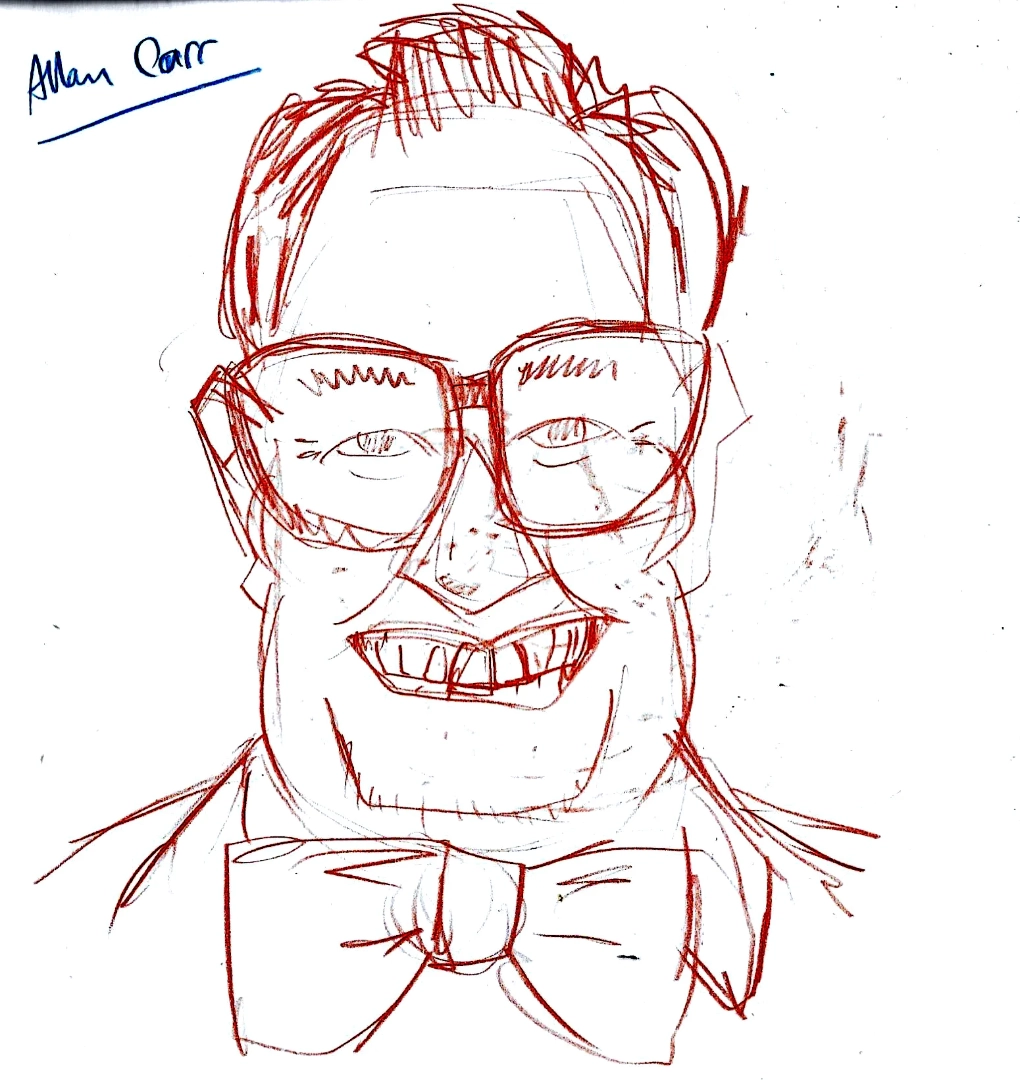
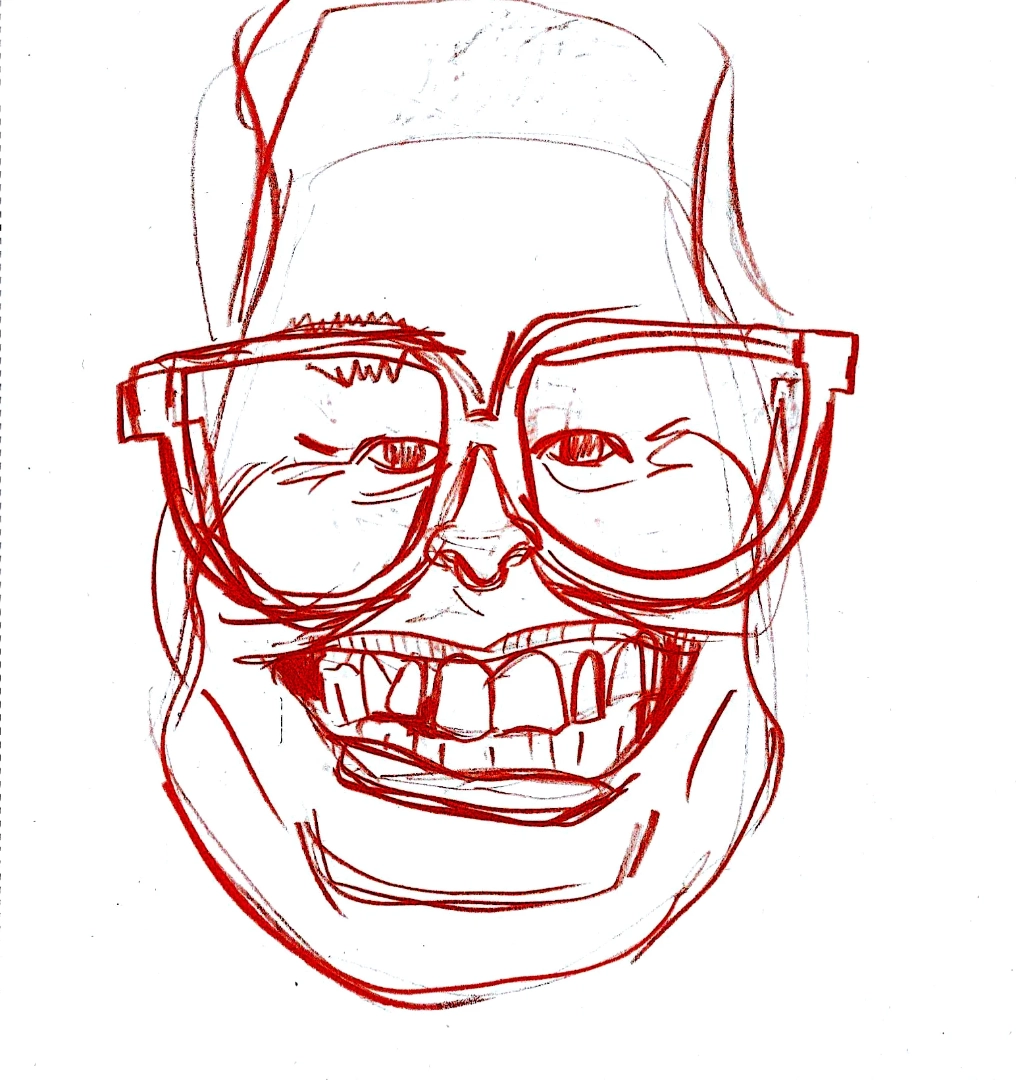
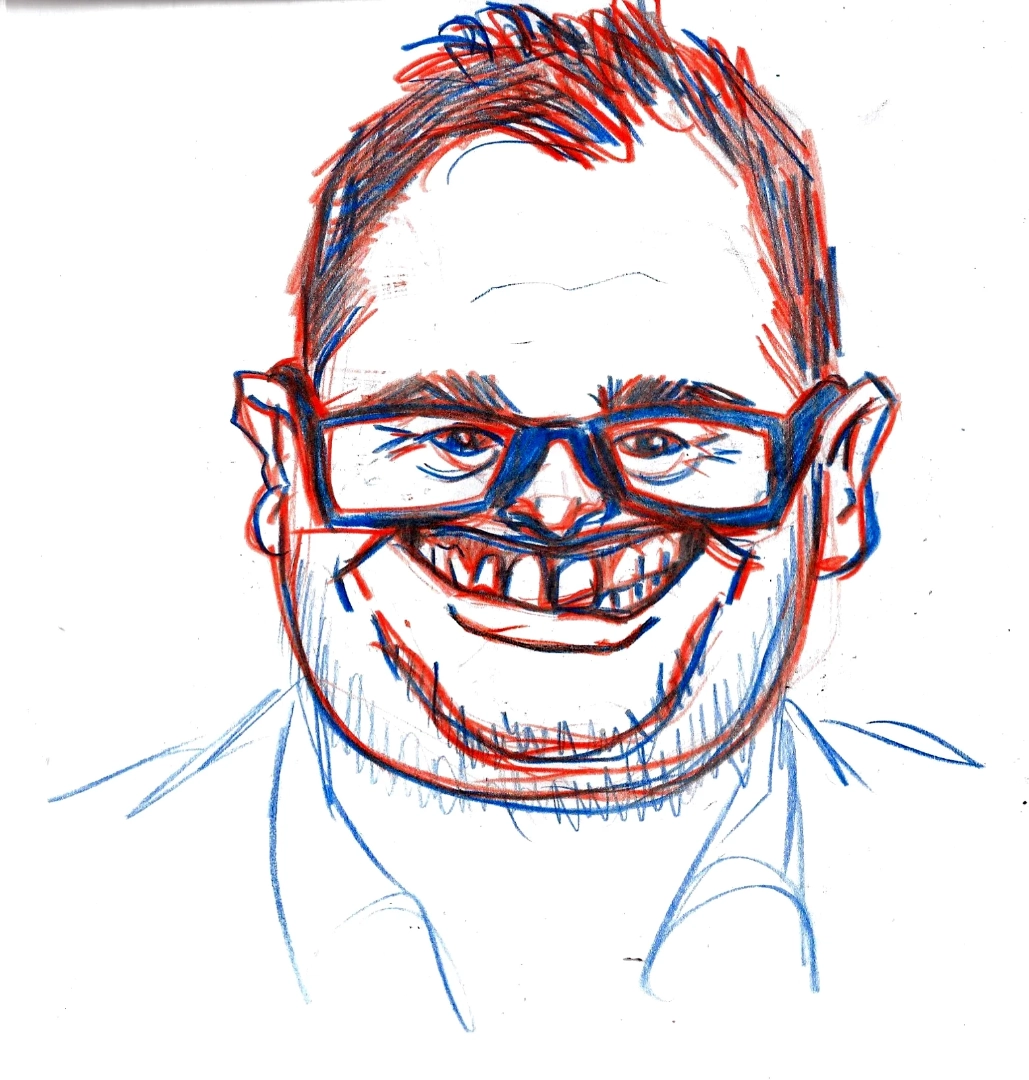
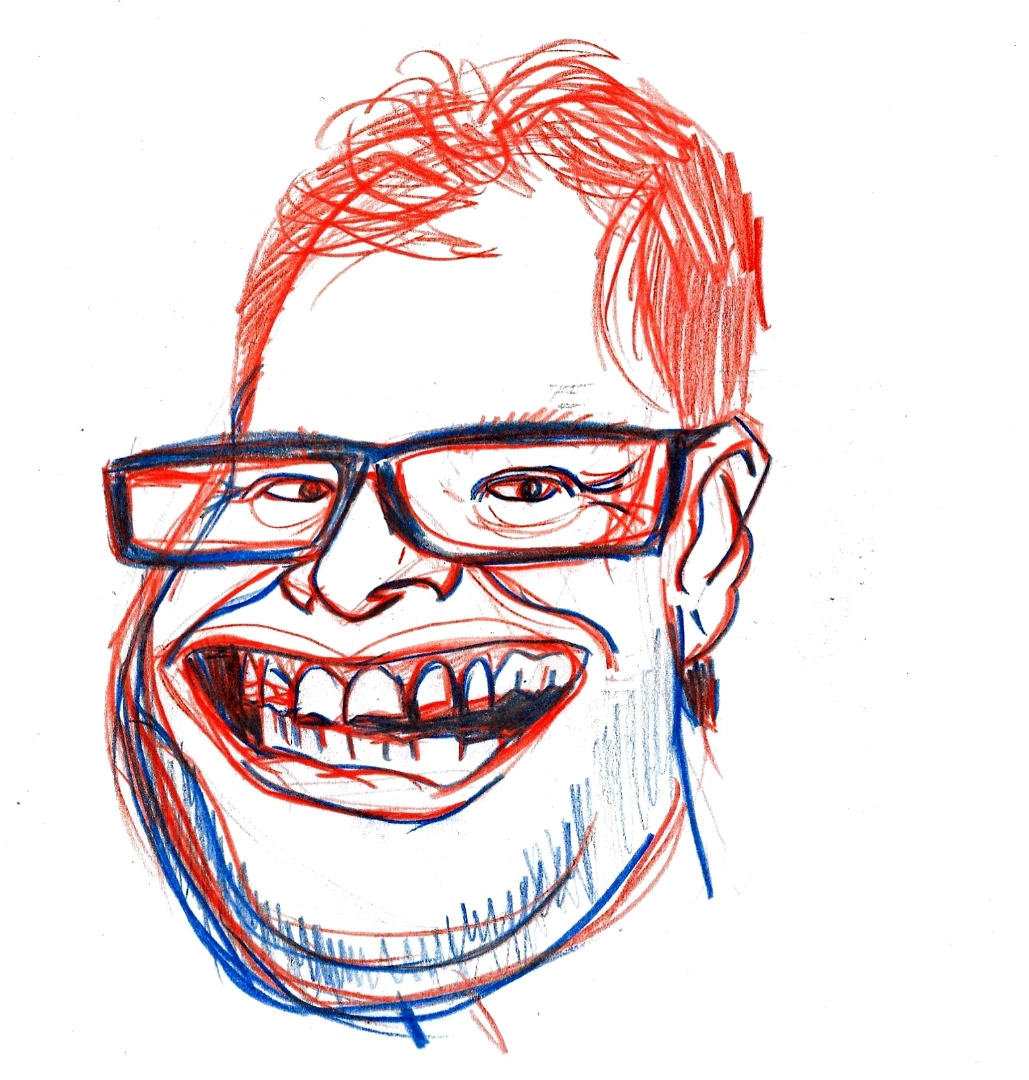
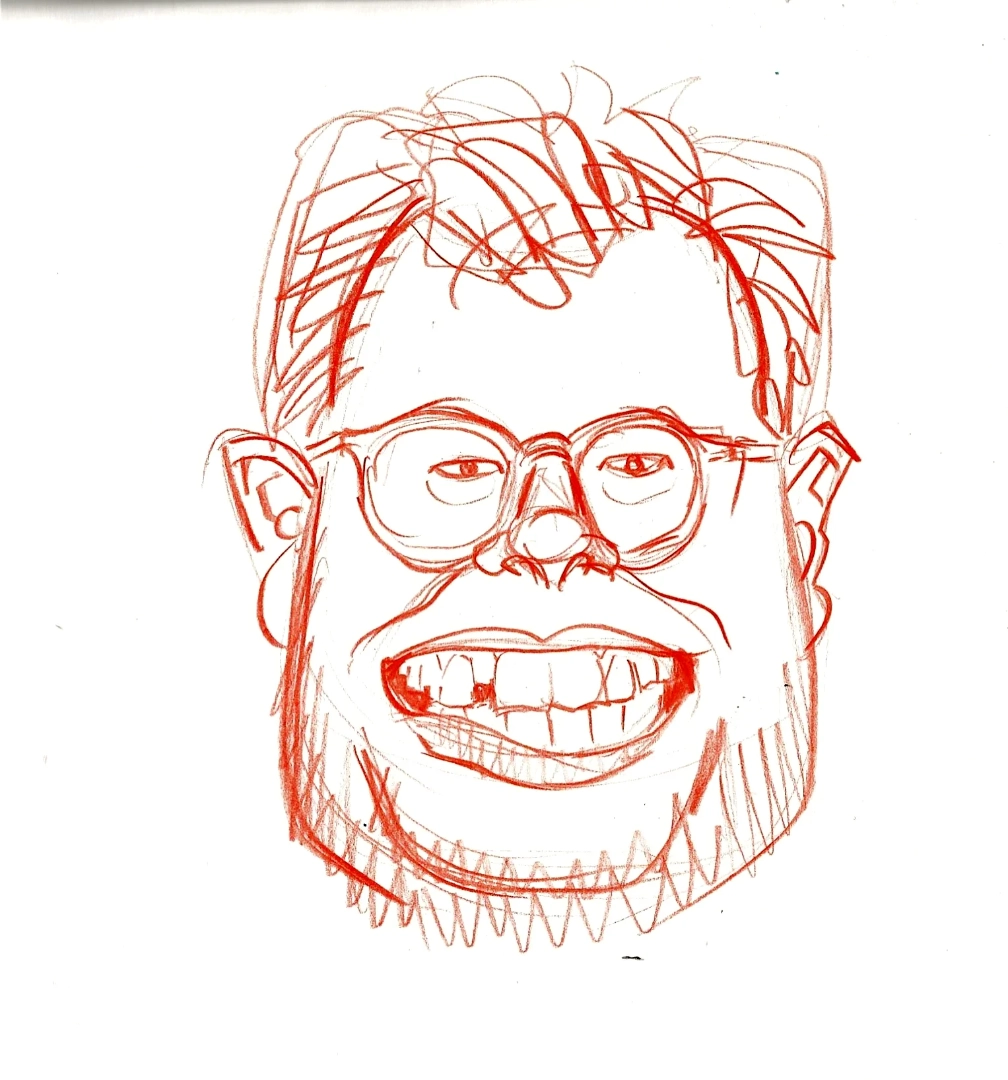
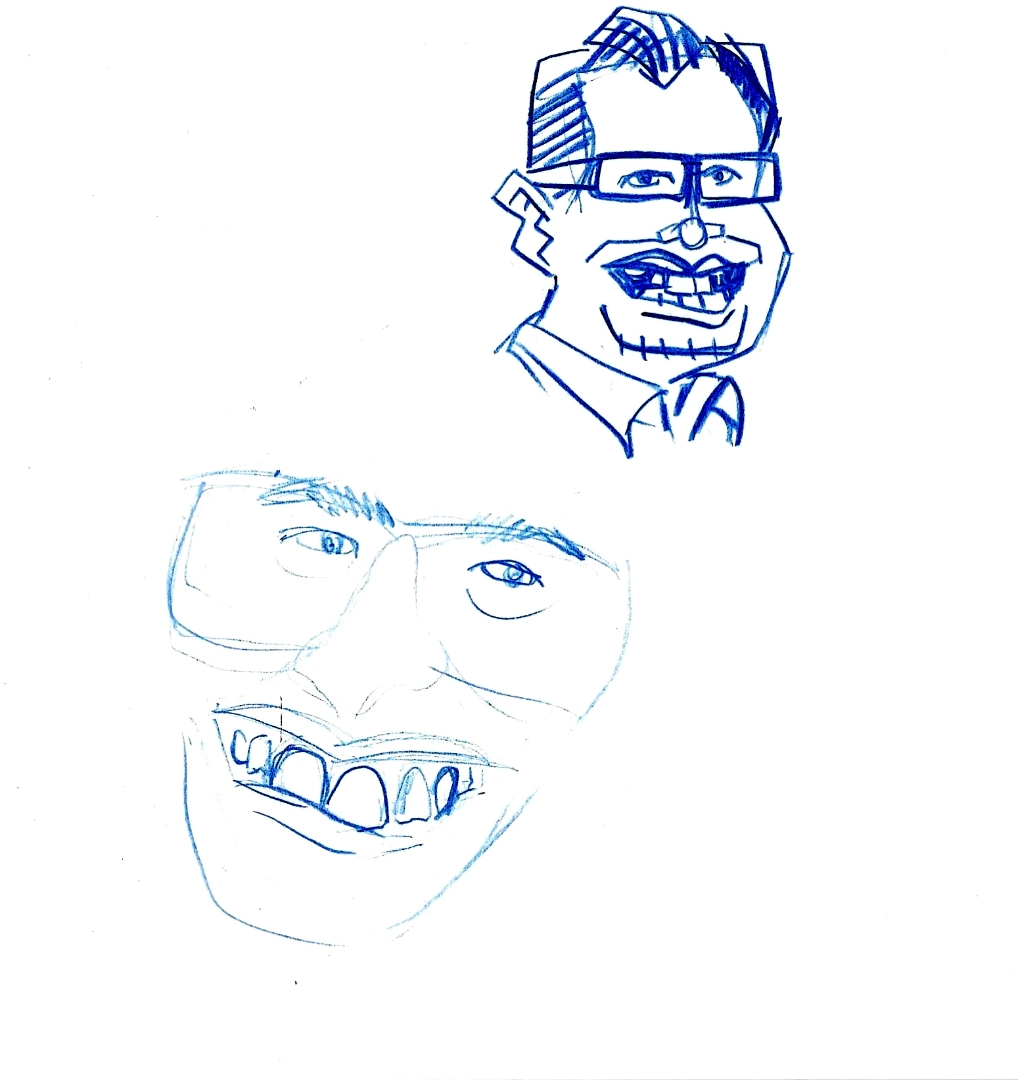
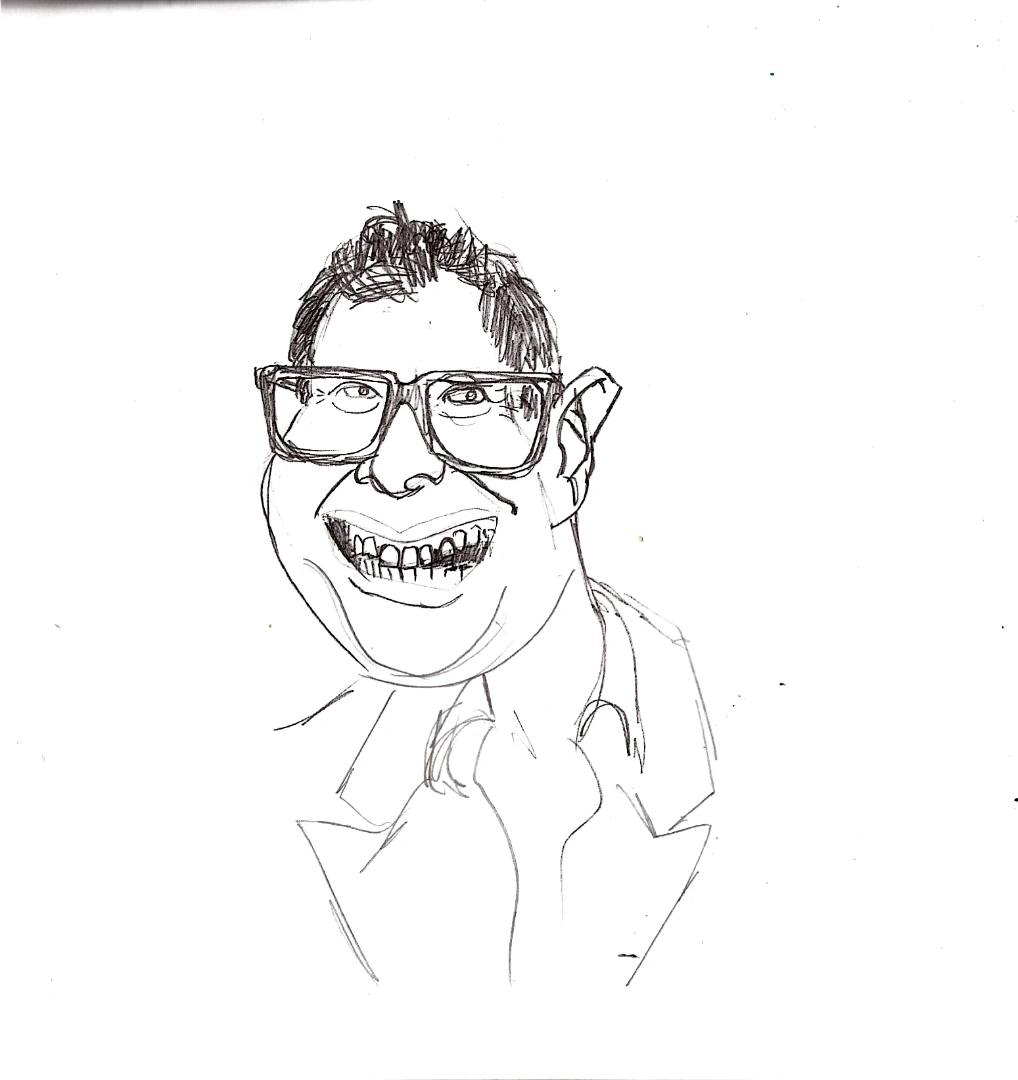
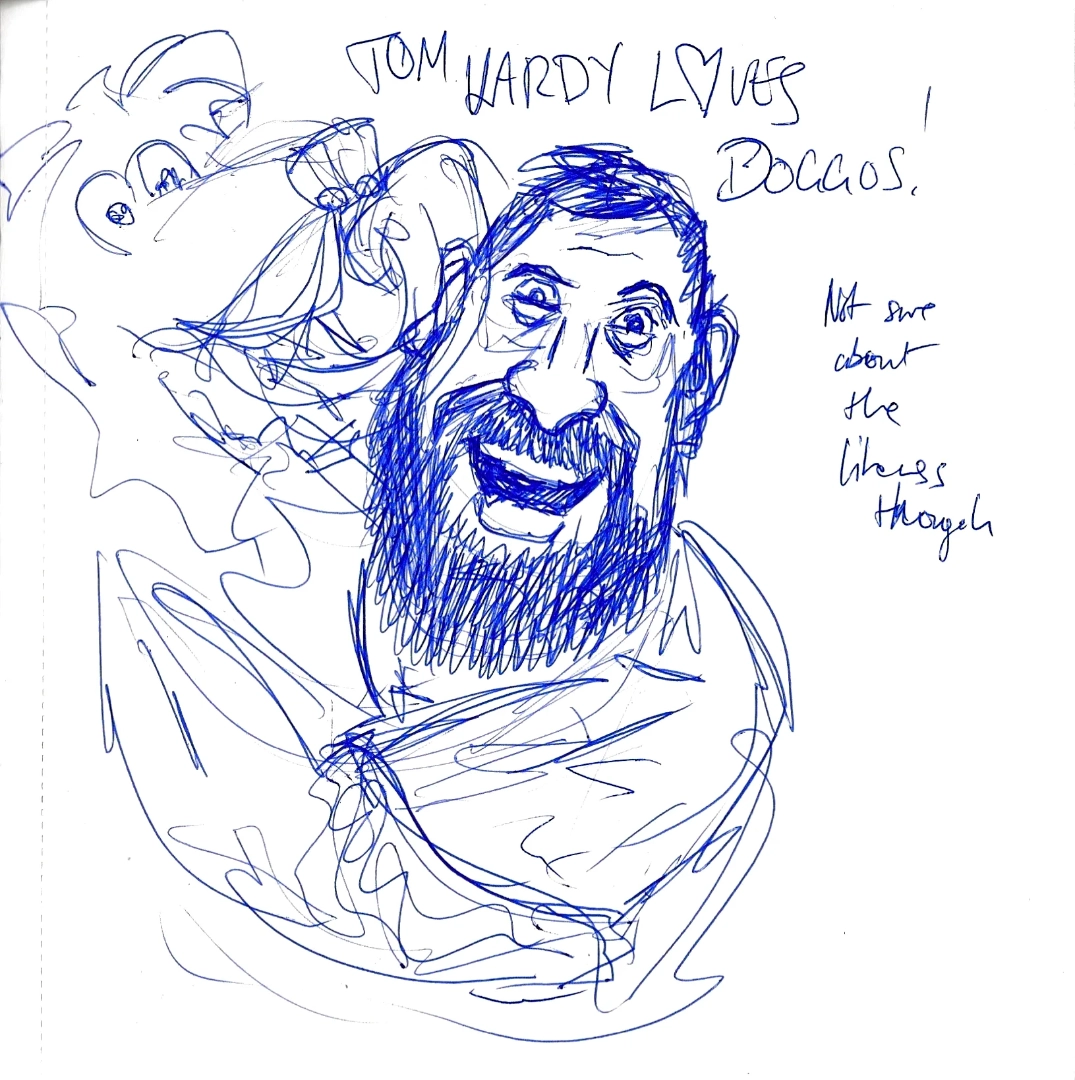
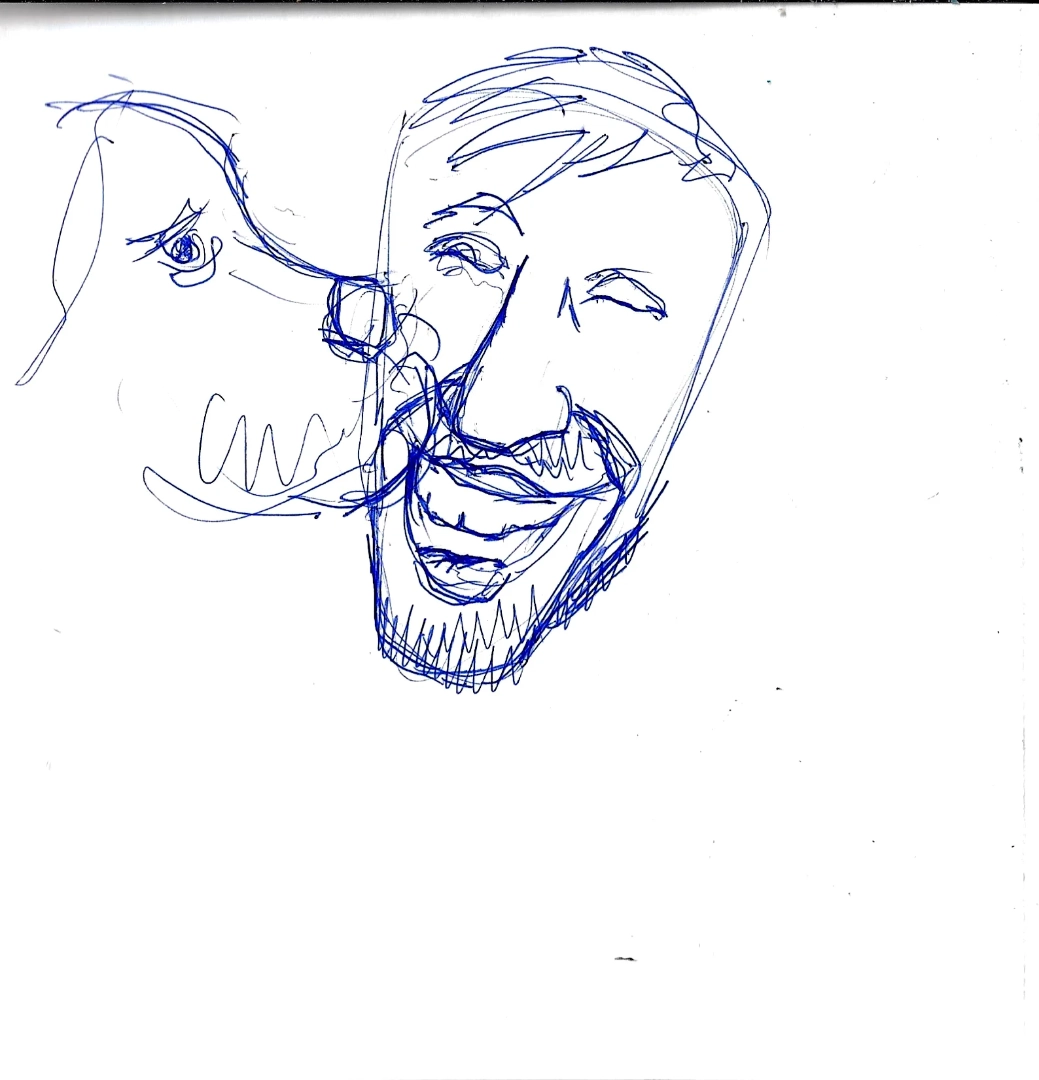
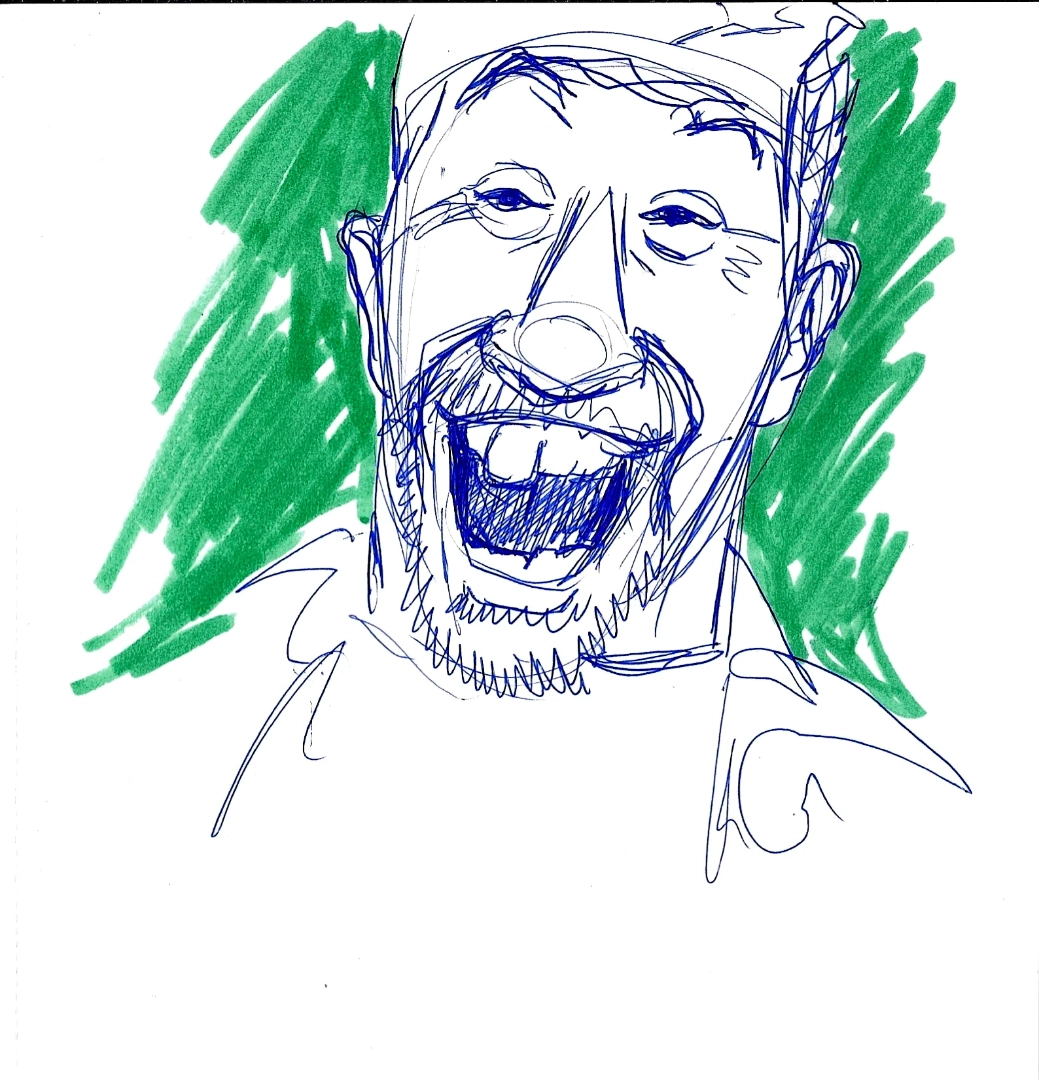
Comentarios